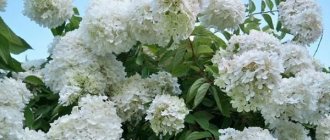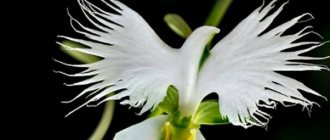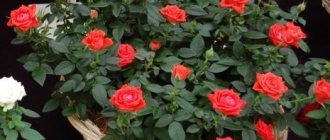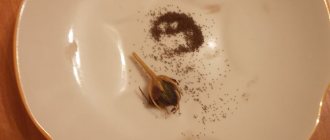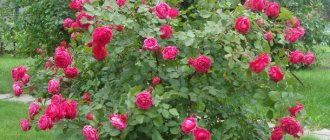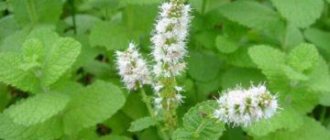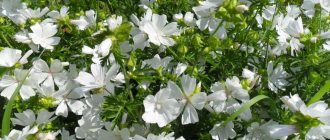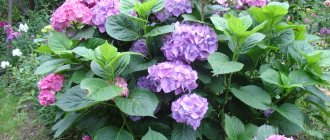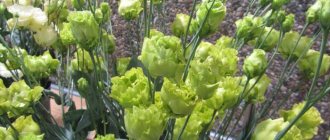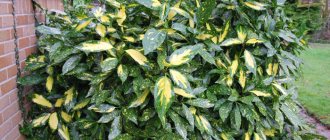Description of Asters perennial
Aster is a plant loved by many gardeners. The shoots of the herbaceous perennial are erect with dense foliage. The height of the stem ranges from 30 cm to 2 m. The leaves are bright green. They are small, lanceolate-shaped. The inflorescence is a small basket. In appearance they are very similar to small bright stars. They come in different shades:
- white;
- blue;
- purple;
- pink;
- raspberry.
Astra perennial
Advantages and disadvantages
Among the main advantages of culture are:
- highly decorative and attractive appearance;
- availability of reproduction at home;
- frost resistance;
- ease of care;
- relative resistance to various diseases and pest attacks;
- good compatibility in group installations.
Among the disadvantages, some summer residents cite the need to form and direct the growth of the crown.
Description of the types of perennial varieties of Asters
Evening primrose perennial (flower): planting and care
There are a huge number of garden perennial asters known.
Bush
This rather compact bush grows 60 cm. The seed ripening period is October. Bush aster is frost-resistant. However, after a few years, when a small hummock of new shoots forms above the ground, perennial bush asters may freeze out in winter.
short
The shrub does not exceed 40 cm. The tops of the low-growing perennial aster are decorated with many small stars. They are most often up to 3-3.5 cm in diameter. The flowering period is September. Against the backdrop of fading greenery, such a bright low flowerbed looks impressive in summer.
Bush aster
Autumn
Flowering period is September-October. In Russia, autumn asters are often called September asters. However, in some cold years, even the most careful owners may not see the plant’s flowers. The height of the autumn perennial aster can reach both 30 cm and 1 m.
Winter
This is the most persistent species of perennial asters. The inflorescences survive until the first snow. They are also called oktyabrinkas. Winter asters have the same problem as autumn asters - sometimes they do not have time to open their buds.
Globular
This species earned its name due to the ideal shape of the bush. The average height of a spherical aster is 50 cm. The flowers are small, but there are many of them, which creates the illusion of a ball during the flowering period.
Ball-shaped aster
Alpine
This type of flower is frost-resistant. After planting, the first flowering can be observed the following year from late May to mid-June. This is a low-growing variety of aster. The height does not exceed 25 cm, and the blossoming bud grows to 6-8 cm.
Austrian
This species reaches a height of 80 to 1.5 m. The flowering period of the Austrian beauty is September. They are frost-resistant. The flowers look like daisies, 6 cm in diameter.
Italian
Bushes of the Italian perennial aster are spherical in shape. They grow 60 cm. The flowering period of this species is mid-summer, namely July August. A small bush becomes strewn with flowers similar to daisies. The only difference is the dark purple color. They gather into dense sockets. The diameter of each flower does not exceed 5 cm. Among the Italian asters there are many varieties. At the same time, I would like to pay special attention to Bessarabian. This is the largest representative of this species. Its height reaches 75-80 cm. The color of the petals is bright lilac and soft pink. The core is brown.
Important ! Italian aster seeds ripen by early September.
English
This species is distinguished by dense and bright flowering. The inflorescences are blue, marsala, salmon, white, lilac, blue, pink. English asters reach a height of up to 2 meters. Therefore, this species is loved by gardeners for the opportunity to decorate the base of garden trees with small flowers with a diameter of 3 cm.
Other
The golden aster will delight you in the last month of summer with its bright flowers in the shape of cones. On long and strong shoots, from 10 to 20 buds develop.
Sideflower deserves special attention. Its shoots develop in the form of a vine. They are often white with a slight hint of pink. Towards the end of the flowering period they turn bright purple.
The American aster will delight the owner with abundant flowering that lasts all summer.
Floral variety
Asters are unique flowers, because there are so many of them - tall, low-growing, perennial, annual. In turn, the latter are divided into three main classes, which were formed according to decorativeness and structure - reed, tubular, transitional. These three classes are further divided into 10 according to the type of flower and its shape. Each group has its own varieties that can surprise the most fastidious gardeners; look at the photo - this is a pompom aster. The charm of these balls is amazing, and they can also have different shades, but these are the same year. Today we are talking about perennial species, and we will consider them further.
Most popular varieties
Aster dumosus starlight
Shrub aster Starlight is a low, compact plant. Its inflorescences grow up to 4 cm in diameter and are bright pink. An adult perennial shrub aster resembles a ball about 40 cm high. Flowering is abundant and lasts from September until the first frost.
Aster dumosus kristina
Aster dumosus kristina is cushion-shaped, white with a bright yellow core. An adult flower grows 30-40 cm. It blooms in August-September.
Other
New Belgian: Bitchwood Rivell (purple), Dick Baylard (pink), Saturn (sky blue), Amethyst (lilac), Oktoberfest (terry blue aster).
English: Lillith Fardel (pink aster), Doctor Eckerner (red-violet), Braumen (lilac), Rothe Stern (burgundy).
Alpine asters: Dunkle Sean, Alba, Ruper, Gloria. Dwarf varieties harmoniously decorate border areas and small flower beds.
What plants are combined with?
- The bush aster is placed in the flowerbed next to other representatives of the large Asteraceae family, which require similar care. The proximity to garden flowers and buds until late autumn has a beneficial effect on the development of the herbaceous plant, including:
- marigold;
- petunias;
- chrysanthemums;
- dahlias;
- phlox.
When designing floral compositions, the bush aster is combined with thuja, juniper, dwarf spruce, and cypress. To prevent conifers from taking moisture from the flower, plants are placed at a distance from each other, and not close.
How perennial Asters reproduce
These flowers are rarely propagated by seeds.
Important ! The problem is that they quickly lose their germination properties. For this flower it is preferable to use vegetative methods
Dividing the bush
To propagate using this method, it is recommended to wait until the flower grows 3-5 cm from the ground. Next, the bush is divided into small parts with 2-3 buds and planted. The very next year, the divisions form a full-fledged plant. It is better to divide every 3-4 years. This helps rejuvenate the root system and also prevents the development of fungus.
Dividing the bush
Cuttings
For propagation using this method, you can use either the top or the whole stem. For rooting, it is recommended to select areas with loose soil in a shady area. The cuttings are rooted into the ground and covered with film. There are no strict time limits. The procedure can be carried out throughout the summer.
Cuttings
Landing
Perennial asters are unpretentious, but show their best decorative qualities in open and sunny areas, although they can withstand light shade. In illuminated places, powdery mildew appears less often on bushes.
They prefer light or loamy soils with a fertile layer, cultivated to a depth of 20 cm. Planting is avoided in damp and low-lying areas where water stagnates in spring or autumn. Before planting, organic matter is added to poor soils at the rate of 10 kg of humus per 1 square meter. m.
Sowing seedlings
Planting perennial asters
Perennial species are rarely grown by seeds; this method is mainly used for alpine asters . They are sown for seedlings at the end of April. Take only fresh seeds, since they do not remain viable for long - no more than 1 year.
The boxes are filled with loose, moist soil, consisting of a mixture of turf soil, sand or peat with the addition of perlite or vermiculite. Mark grooves with a depth of no more than 0.3–0.5 cm and lay out the seeds, previously soaked in a solution of potassium permanganate. The crops are sprinkled with loose soil on top and sprayed with water from a spray bottle. To create a greenhouse effect, cover with a plastic bag or glass.
Seeds germinate within 1.5–2 weeks at an air temperature of 15–20°C. After 2–3 true leaves appear, the seedlings dive. Water them rarely, but abundantly, avoiding water stagnation.
It takes 5–6 weeks for seedlings to develop until they are planted in the ground. Plants are planted in a permanent place in the garden in late May-early June, when young asters are no longer threatened by frost.
Sowing in the ground
Seeds are sown in the ground in May in prepared beds to a depth of no more than 0.5 cm. At an air temperature of 20°C, seedlings appear in 10–12 days. During the summer, the seedlings are cared for in the same way as annual asters, and in the fall they are transplanted to a permanent place. You can sow seeds in September immediately after harvesting.
With the seed method, perennial asters bloom in 1–2 years, since first all the forces of the young plants go towards developing the bush and building up the root system.
Features of home care
Aster is an outdoor plant. However, its seedlings can also be found in the homes of experienced gardeners. To grow a strong and healthy plant, you must follow the basic recommendations.
Temperature
For active growth and development of seedlings, it is recommended to maintain a temperature of 15-16 degrees. As 3-4 leaves appear on the first shoots, the temperature can be reduced to 12-15 degrees.
Important ! To make flowers feel as comfortable as possible after transplanting them outside, it is recommended to reduce the room temperature at night. This will allow the seedlings to adapt to new open-air conditions as quickly as possible.
Lighting
Astra loves to bask in the warm rays of the sun. It is recommended to place the seedlings on a windowsill on the sunny side. If this is not possible, it is recommended to install lamps nearby. Many gardeners place containers of seedlings in the greenhouse for a period of time. This allows them to spend extra time in the sun, and it is also useful for hardening off the sprouts.
Watering
Watering should be plentiful, but at the same time rare. After each moistening of the soil, it is recommended to carefully loosen it. This will avoid waterlogging of the soil. The soil should not be allowed to dry out.
Spraying
Spraying is an integral step for growing healthy flowers. During the first week after the first sprouts appear, the soil is moistened with a spray bottle once a day. The second week - once every two days. In the third week, you can begin full watering 2-3 times a week, gradually reducing the frequency, but increasing the volume of liquid.
Humidity
The recommended air humidity in the room where asters grow should not fall below 65%. The maximum value is 80%.
Priming
Aster is a flower that prefers fresh soil. This is due to the fact that old soil may contain sources of various diseases and pests. The ideal mixture for a flower: sand, turf, decomposed peat. The components are mixed in a ratio of 1:3:1. It is necessary to exclude all large lumps from the soil.
Important ! For seedlings, ordinary river sand is suitable, but if you can’t get it, you can use coarse-grained sand, having previously calcined it.
Feeding
To grow strong flowers indoors, you need to think about feeding. It is recommended to carry out the first fertilizing 2 weeks after planting the seeds. It is during this period that the root system actively develops. For the first time, it is recommended to mix potash and phosphate fertilizers, and the proportion should be 2 times less than specified in the instructions. Fertilizer must be applied directly to the soil. If it gets on tender young leaves, burns may occur.
Plant care
The perennial aster is a very unpretentious plant and caring for it is very easy. This is one of the few ornamental plants in the garden that you can safely forget about immediately after planting. But still, in order for the aster to bloom magnificently and not get sick, you need to follow very simple rules of care. Caring for this perennial comes down to regular watering, weeding and disease control.
Watering
Astra does not like dampness, and therefore there is no need to water it too much. But in the summer, and especially during the dry period, when it is hot, the plants need to be watered well in the evening.
Mulching and loosening
Aster can grow on any soil, but this plant still prefers loose, breathable soil. If you have heavy soils on your site, then you will have to loosen under the bushes throughout the season.
Be sure to remove weeds around the bushes, as weeds can choke the aster and prevent it from developing well.
To weed less often, you can mulch the soil around the roots. It is better to use peat, crushed tree bark or sawdust as mulch. Not only will mulch prevent weeds from growing, but it will also help retain moisture in the soil, allowing you to water your plants less often.
Fertilizing
Asters are very responsive to the application of mineral and organic fertilizers. In spring and summer, any organic matter, phosphorus fertilizers and lime can be applied under the bushes. During active growth of bushes, you should feed them with humus. Applying fertilizers will help the bushes gain green mass and produce more inflorescences.
When and how does it bloom
Today, botanists know a huge number of species, varieties and hybrids of this unusually beautiful flower.
Types of flowers
The Aster family includes a huge number of flower species. Selecting a plant that is suitable for a specific installation or flower bed will not be a problem. Today there are several main and most popular types:
- ostrich feather;
- Duchess;
- bouquet;
- Victoria.
Flower shapes
According to their shape, asters are divided into several groups.
To size:
- small - up to 3.5-4 cm;
- medium - from 4 to 8 cm;
- large - from 8 cm.
Inflorescence shapes
According to the shape of the inflorescence:
- flat;
- rounded flat;
- hemispherical;
- spherical;
- semi-double;
- terry.
Flowering period
Asters are usually divided into 3 flowering periods. The first ones are spring. They bloom from May to June. Next comes the turn of summer. They bloom from June to August. This is perhaps the longest group of flowers. Autumn ones are pleasing from the end of August until the first snow.
Changes in care during the flowering period
During the birth of buds, the aster is fed a second time. For this, prepare 50 g. mixtures of phosphate and potassium for every 1 m2 of land. Just before flowering begins, the aster is fed a third time. The composition of the fertilizer remains the same. When the flowers have bloomed, it is recommended to reduce watering slightly. Asters are very sensitive to excess moisture, but do not overdry the soil. It is recommended to develop the frequency of watering yourself, based on the time for complete drying of the soil near the root system.
Important ! If the summer is dry, then watering should be plentiful. Otherwise, the flowers will be sparse and small.
Transplantation after purchase and during reproduction
It is recommended to transplant seedlings into open ground in early May. It is recommended to loosen the soil after each watering or rain. This helps to ventilate the root system and protects against rotting.
If the time for planting seedlings is missed, then you can resort to the cutting method, which can be carried out throughout the summer.
Advantages of the seed method
There are several ways to propagate alpine aster. The most accessible and simplest is seed. Usually it does not require the use of additional equipment and materials. Everything you need is available in the household.
By propagating plants by seeds, you can get a large number of seedlings. With proper care, they will all be fully developed.
Possible problems in growing
An attentive gardener immediately sees external changes in his favorite flower.
Problems with leaves
If the leaves begin to turn yellow, become brown, curl and dry out, this indicates improper care or the development of a disease.
First of all, you need to make sure that the flower is not overdried. You can try changing the soil moisture regime. If black longitudinal stripes are added to the listed factors, this indicates the development of fusarium. This disease appears if the soil is overly moistened and there is stagnation of water in the root system. In this case, it is impossible to save the plant.
The appearance of lumpy spots also indicates the development of late blight. To overcome the disease, it is necessary to cut off all affected areas and sprinkle with activated carbon.
Pests
Aphids, thrips and cicadas are the main pests of asters. They suck the sap from the plant and are carriers of diseases. To prevent the appearance and reproduction of insects, it is necessary to treat the flowers with Fitoverm solution or other insecticides.
The earwig is capable of gnawing not only the leaves of the flower, but also the stems and buds. To drive away the insect, it is necessary to regularly remove weeds and loosen the soil.
Important ! When the first signs of spider mites are detected, it is recommended to treat the leaves and stems of the plant with a soap solution.
Diseases
Mosaic disease appears as yellow streaks on the leaves. After this, chlorosis develops and the plant stops developing. To overcome this disease, it is recommended to treat the bush with Actelik or Peritrum.
Aster rust is a fungus whose natural habitat is the needles of pine trees. The disease is characterized by the appearance of swellings on the lower part of the leaves. They are filled with rusty spores. For treatment, use a 1% solution of Bordeaux liquid. Treatment is carried out after 10 days. If the disease is detected late, the bush is almost impossible to save.
Signs of improper care
Aster, although an unpretentious plant, will immediately tell its owner about improper care. First of all, the leaves of the plant signal this. They may wilt or change color. If measures are not taken on time, improper care will affect flowering. The inflorescences will be sparse and pale. In addition, the plant will have few flowers.
Aster
Many different types of asters have been bred. Before purchasing a particular variety, it is recommended that you read the description of the flower in more detail. General principles and rules may sometimes not be suitable for individual hybrids. If the flower bed is constantly renewed, then it is recommended to pay attention to annual varieties.
Queen of the autumn garden - aster
Just imagine that there are currently more than 600 species of asters. They include a huge variety of varieties that amaze even the most fastidious landscape designer with their beauty. Asters are unusual in that their inflorescences are all different; bushes can often be confused with chrysanthemums and peonies, but there is another unique feature - shades, among which there is a variety of blue. This is quite rare among flowers of all species.
Asters are unpretentious, beautiful, accessible to everyone, and can be grown both with and without seedlings in all regions of our large country. What else is needed? Yes, but it’s just a little better to understand the varieties, because it’s difficult for a beginner not to get confused in such an assortment. We will help you with this, of course, we cannot describe all 600 species, but we will tell you about those varieties that gardeners most often plant - the best and most beautiful. And as you can understand, today we will talk mainly about perennial asters.
Low-growing varieties for the garden and flowerpots
We have already mentioned that there are many asters - more than 600 varieties. If you decide to decorate your garden with these flowers for the first time, we first advise you to get to know the plants better. After all, you need to know how tall the flowers will be, when they bloom, whether they need to be dug up in the fall, and what species prefer. This is the only way to get a luxurious garden and not waste time and effort. Of course, you must first choose a good variety. And among dwarf asters we can recommend the following.
Recommendations for planting and care
The soil
Dwarf asters, as for the most part, are unpretentious, but if you want splendor and long flowering, then, firstly, immediately plant them in good soil, and secondly, remember to feed them. If your land is poor, then apply fertilizer once a week; if it is moderately fertile, then once a month. Asters can be fed with complex preparations, fertilizers containing a lot of potassium and phosphorus, but not nitrogen. If we talk about organic matter, then no droppings or manure, you can only use rotted compost and humus.
The second important condition is the breathability of the soil. If the soil holds too much moisture, the root system may begin to rot and your flowers will wither. Therefore, during planting, you need to pour sand or perlite on the bottom, with humus on top. After each watering, it is better to loosen the beds, thereby giving the roots oxygen and destroying possible homes for parasites.
Also, before sowing or transferring seedlings, it is necessary to test the soil for acidity. This can be done using litmus paper, which is sold in gardening stores. Dwarf asters and all others prefer neutral soil and slightly alkaline soil - 6.5-7.5. To reduce acidity, lime is sprinkled on the site.
Watering and diseases
Everything here is quite simple - asters love moisture, but in moderation. That is, the season turned out to be rainy, which means you only need to loosen the bushes so that there is no stagnation. If there is enough moisture, then watering 1-2 times a week will be enough; if there is a drought, then every day. Many people believe that you only need to water flowers with settled water. But experience has long shown that this principle can only be applied to seedlings, and in the garden bed, simple water from sludge will be enough. It is more important to ensure that there is no crust on the surface and that parasites do not multiply.
Pests
Since we mentioned parasites, let’s talk about them too. Dwarf asters do not suffer from insects so often, but aphids and thrips can still settle on flowers. In this they are similar to chrysanthemums. It is better to start prevention than to fight an insect colony. The first thing you need to do is to water the soil even at the time of sowing the seeds, and it doesn’t matter whether you do this at home or have chosen the seedless method. Boiling water and potassium permanganate or hydrogen peroxide is the simplest and most effective option.
You can sprinkle the area with ash or onion peels, and infusions can also be made with them. Another option is to grate laundry soap - 75% and pour over the area before planting. Insects do not like spices and fragrant herbs such as wormwood. Therefore, they can also be used both before sowing and during spraying attacks. To prevent diseases, irrigation with a soap solution, water with potassium permanganate, copper sulfate, Bordeaux mixture, and “Hom” is most often used.
Important! Asters are prone to late blight, so they are not planted after nightshades and gladioli. It is also better not to grow bushes for more than three years in one place, and during replanting, update the soil and the asters themselves.
These simple techniques and tips are important and at the same time very easy even for beginners. Caring for asters will pay off on their part with abundant flowering, which will delight the eye on gray autumn days.
Varietal characteristics of cultivation
- Position. All types of aster require sunny and fresh places. Lush New England, New Belgium and Shrub species require permeable, fertile and moist soils. They should be fertilized and watered throughout the season to keep them looking healthy and blooming profusely. In dry, poor soil, the lower leaves quickly fall off.
- Soils. Other species can be planted on weaker soils. This is especially true for narrow-leaved species such as aster angustifolia, heather and freecarta. They prefer a permeable and drier substrate.
- Frost resistance. All types, with the exception of Freakart Astra, are completely frost-resistant. Alpine and Tongolian asters growing in rock gardens should be covered with coniferous branches for the winter.
- Reproduction. Asters reproduce by dividing the bush in April-May. Bush and new Belgian varieties grow faster. In order for plants to grow lushly and abundantly, they need to be separated every 2-3 years. Less commonly, New England varieties can be separated.
- Garter. Tall New England and New Belgium varieties require staking.
- Diseases. New Belgian and bush asters are sensitive to powdery mildew. To reduce the risk of infection, provide good air circulation between individual bushes by planting plants far enough apart (at least the width of the bush so they can easily pass between bushes). Plants that grow too densely need to be provided with access to the sun by removing some of the shoots.
How to choose neighbors?
Tall varieties can form an intermediate tier in a flower bed or grow against the background of other perennials. Since New England and New Belgium species tend to drop their lower leaves, it is good to fill the space below with other plants:
- Japanese anemones;
- late varieties of phlox;
- Echinacea purpurea;
- golden dahlias;
- marigold;
- perennial ornamental grasses.
Low varieties look interesting next to plants with silver leaves, for example:
- cat mint;
- absinthe;
- splinters.
